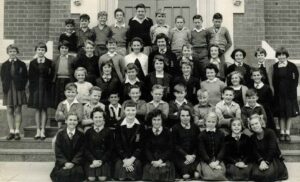
St John’s School last week took part in 200 Years of Catholic Education in Australia celebrations and took the time to reflect on their school’s history which dates back to 1884.
The first Catholic school in Cobar was established as a Parish School and with an enrolment of 95 students, and was originally known as Saint Xavier’s Convent School.
Sisters of Mercy nuns from the Bathurst Diocese travelled by train to Nyngan and then by Cobb & Co Coach to Cobar to staff the school.
By 1900 there were 225 students, a staff of seven Sisters, a new brick building had been constructed (the school’s current Kindergarten – Special Ed building) and the school became known as Saint Joseph’s School.
From the 1930s the Cobar Catholic High School was called Saint John’s School and the Primary section was known as Saint Mary’s School.
The schools maintained a combined enrolment of about 250 students until 1964 when the High School closed.
The primary section then took the name St John’s Parish School.
In 1965 new school buildings, two classroom blocks (still in use today), a hall with a canteen and storage areas were constructed.
In 1975, under a Government initiative, an extensive program of terracing and improving the grounds was carried out.
In 1996 the Father Thorpe Memorial building (the current administration block) was completed thanks to funding from the State Government and the Cobar parish.
In 1998 the last of the Sisters of Mercy left Cobar and in 1999 two Sisters of St Joseph began their ministry in Cobar.
When they left at the end of 2003, it would be the first time in 118 years there would be no religious staff at the school.
The first lay Principalship commenced in 2004 with Deb Fryer and Jenny Nicholson, sharing this role for five years as co-principals until 2009.
(They were the first co-principals in the Diocese of Wilcannia-Forbes.) Mrs Fryer continued in the principal’s role until 2011.
In 2011 the current school hall was completed with State Government ‘Building Education Revolution’ funding and major refurbishment of the classroom blocks took place.
The school has since continued to be led by lay principals.—contributed